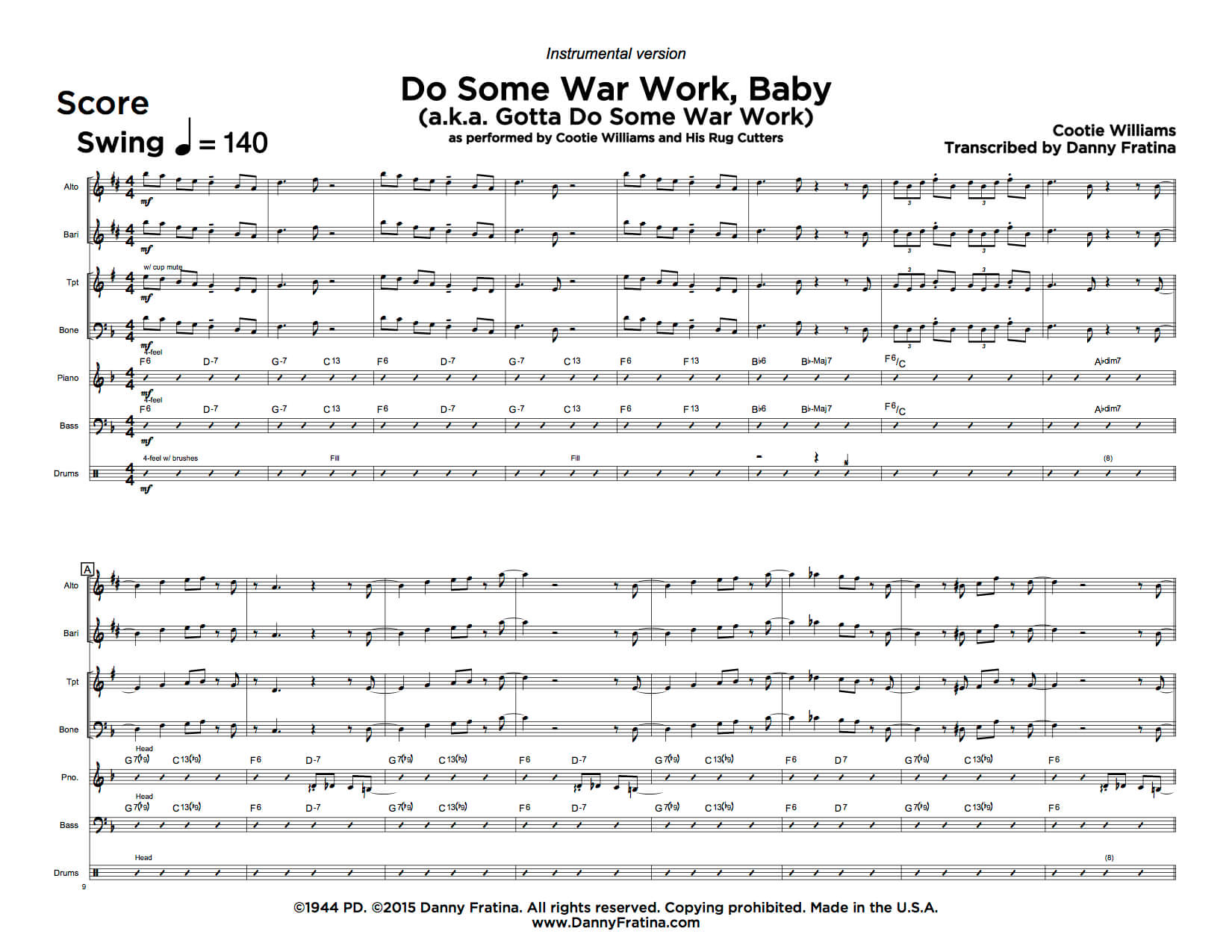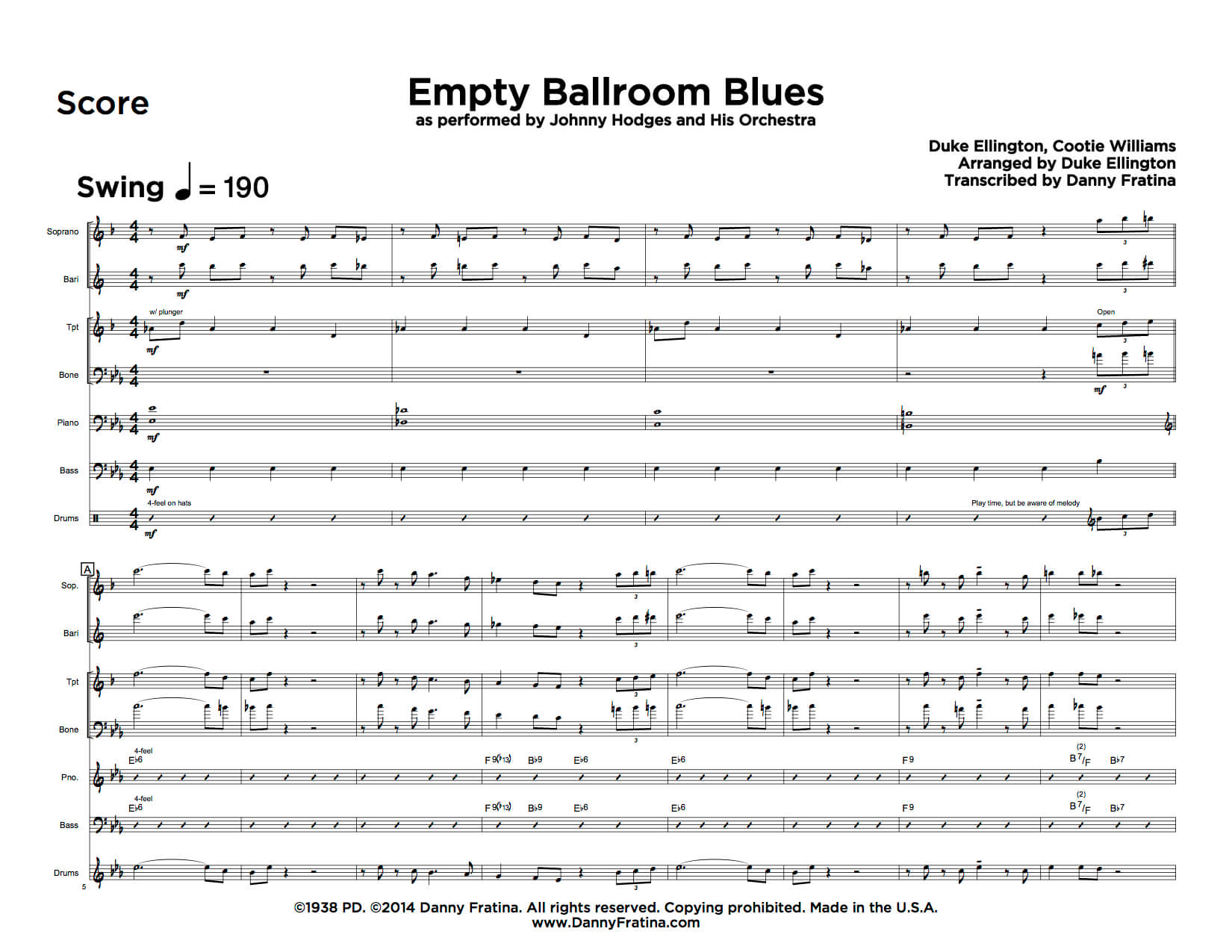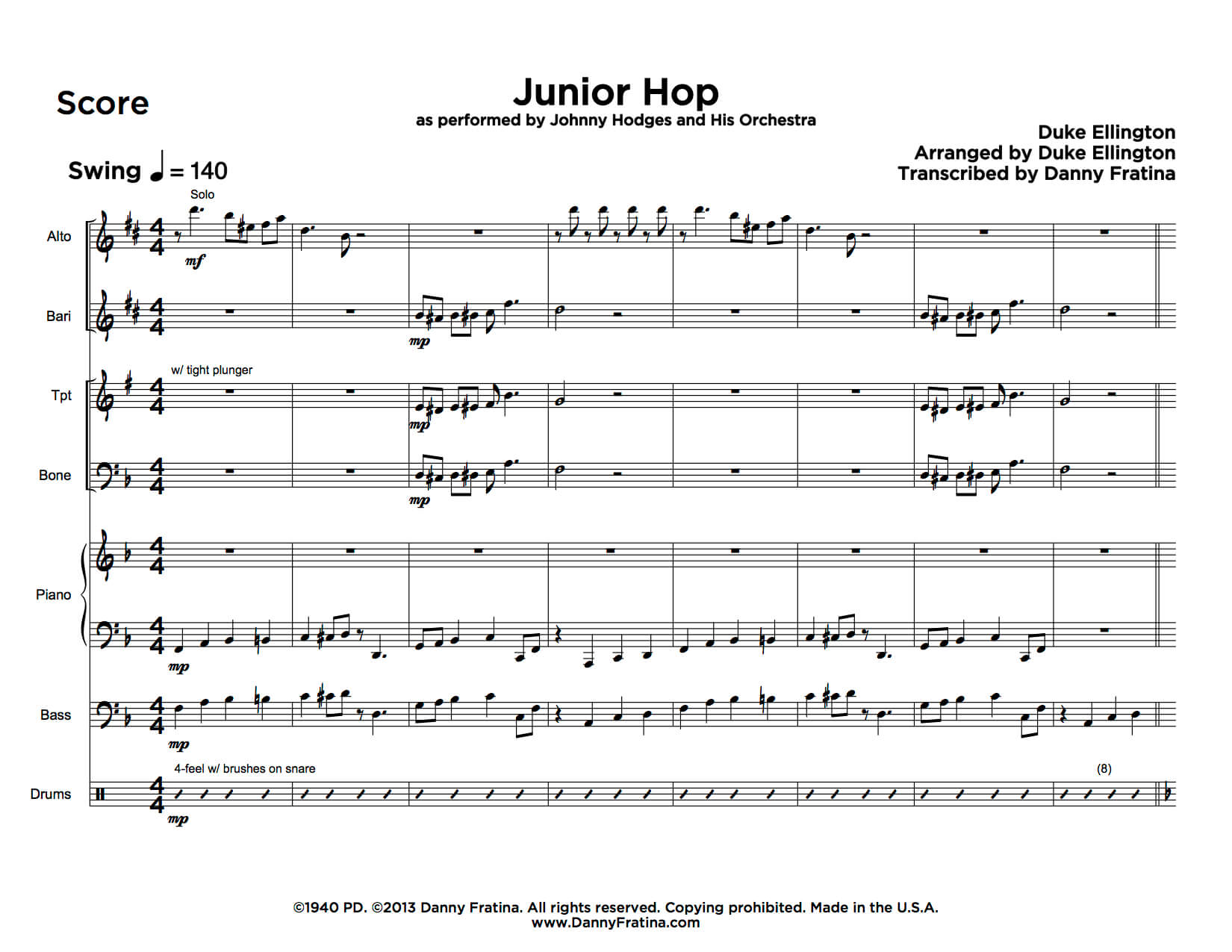Johnny Hodges was a major player of the swing era and was a key component in the establishment of the Duke Ellington sound. He was a master of the alto saxophone and had an incredibly distinct voice on it. I’ll probably post more about Hodges in posts in the future, but for now I want to focus on the 7-piece band he fronted starting in the late 30s. That band forms the foundation of what on this site I call the Ellington 7-piece.*
His best lineup, in my opinion, looked like this:
Johnny Hodges – Alto
Harry Carney – Bari
Cootie Williams – Trumpet
Lawrence Brown – Trombone
Duke Ellington – Piano
Billy Taylor – Bass (and later Jimmy Blanton!)
Sonny Greer – Drums
If you aren’t familiar with these guys, that’s OK, now is a good time to get to know them!
The music that Ellington (with input from others, including Hodges) wrote for this band swung way hard and had many of the characteristics that made the swing era sound the way it sounded. However there were major orchestrational and logistical differences.
Key Concepts
1. In a big band, you have a lot of what we call “mechanical” voicings; that is, from the melody note you strictly voice down the other horns to get a tight voicing with all the main notes of the chord, usually within an octave between the top and bottom instruments. In Duke’s band, this tight voicing was spread out over a couple of octaves so that each of the four horns are always (with a few exceptions usually geared toward the specific player) in a perfectly comfortable range. The voicing is still complete and no important notes are missing, and very rarely is there doubling. There is little counterpoint besides battling riffs, so it’s still concerted (same rhythms for everyone). The result is that a lot of the time, each instrument sounds like a soloist blending in with other soloists. It both makes it easier to execute and gives space in their respective ranges for each player to get his unique color out into the big picture.
2. There is more soloing for the individuals in this band compared to a lot of big band stuff. This is because you are limited to ensemble work with four horns and if you aren’t, you risk burning your players out with enormous amounts of playing. So to balance this logistical issue, the solo-to-ensemble ratio is usually flipped. And within that, when you specifically play a Hodges/Ellington piece, you can almost guarantee some alto solo space, since Hodges, the alto player, was the featured musician in his own band.
3. Because of this, the forms are simpler. Usually it’s got the head, followed by solos, the occasional shout section, and a head out. Ellington rarely writes intros or real endings, a legitimate concern if you are playing these tunes for dancers, since they like to have a starting setup and a notification to do a finishing move. The abrupt beginning and ending is actually both a critique and characterizing strength of Ellington.
What is the benefit of having a band like this?
1. It’s easier to assemble a smaller group, both logistically (less phone calls to make, less parts to print, more venue sizes to fit into) and financially (more money per band member without breaking too many venue’s banks, smaller vans and less airfare for touring).
2. The balance of the soloist vs. the ensemble is shifted slightly more towards the soloist here. You can get a big full sound with less people and they can get more space to solo and stretch out.
3. The music is rarely played and is really fun! You can only play “In The Mood” so many times before you just gotta pull out something a little more nasty like “I Know What You Do“!
As some more time goes by I’ll have more Ellington 7-piece charts to sell so you can build your own full blown library. It’s not a common instrumentation so there is relatively little music out there, but stick around and you’ll find much more!
*Why not Hodges 7-piece? Because Hodges’ book was made up almost entirely of Ellington’s music, and no matter who plays that music, it will always sound like Ellington. Johnny Hodges brought it to life with his incredibly distinct and unique sound: “Star-Crossed Lovers” and “Isfahan” don’t sound authentic without Hodges’ sound behind those melodies, but ultimately this is Ellington’s music at its core.



